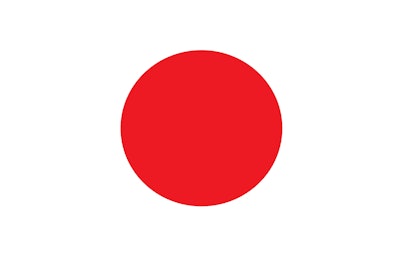
Poultry meat consumption in Japan increased about 2% during the first three quarters of 2021, despite a slight drop in domestic production, according to the recently released Rabobank Poultry Quarterly report.
Poultry production dropped by 0.1% for the first three months of the year, according to the report, mainly as a result of avian influenza outbreaks during the first half of the year. Those outbreaks pressured production down a percent for the first half of the year, although it picked up during the third quarter of the year, actually increasing 1.7% during that time when compared to the third quarter of the previous year.
However, additional avian influenza outbreaks are again challenging domestic poultry production in Japan, which is expected to impact the local prices.
Importing chicken into Japan
To help mitigate the decline in production and the increase in consumption, Japan imported more chicken during the first half – about 5% more when compared to the first half of 2020.
Japan has particularly looked to Thailand for its poultry imports, the report stated. But while there was a reliable import of Thai chicken during the first half of the year, the situation became more complicated during the third quarter as Thailand has been experiencing labor shortages and processing plant production slowdowns due to worker absences related to the COVID-19 pandemic.
Because of the production issues in Thailand, Japan is looking more to other suppliers, such as China, the report stated.
Meat and poultry prices
Breast meat prices in Japan have reached near-record prices during the second half of 2021, with average prices around JPY350 (US$3.07) per kilogram. Leg quarter prices, meanwhile, have stayed firm at levels lower than the year before.
Strong domestic poultry prices are anticipated in the months going forward, taking into consideration that production is going to continue to be challenged, and stocks of frozen chicken are at their lowest since 2015. Also playing a factor will be the fact that Japanese beef prices remain high.

















